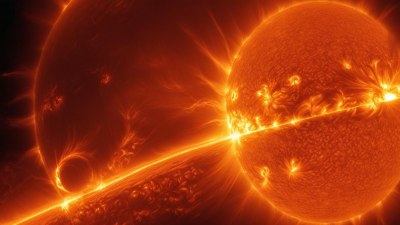What Causes Hail to Form Inside Storm Clouds
Explore the atmospheric processes and conditions that lead to the formation of hail inside storm clouds.

Hail is a form of solid precipitation consisting of balls or irregular lumps of ice that often fall during severe thunderstorms. The formation of hail inside storm clouds involves complex processes that combine atmospheric dynamics, moisture content, and temperature variations within the cloud. Understanding what causes hail to form requires a deep dive into the structure of storm clouds, the phases of water in the atmosphere, and the mechanisms that allow ice particles to grow to significant size before falling to the ground.
At its core, hail formation starts inside cumulonimbus clouds, which are towering storm clouds characterized by strong updrafts and a mix of supercooled water droplets and ice crystals. These clouds typically form in environments where the atmosphere is unstable, providing the vertical lift necessary to carry moist air upward rapidly. The rapid ascent cools the air to temperatures below freezing, even though the water remains in liquid form; this phenomenon creates what's known as supercooled water droplets, which are critical for hail formation.
The Role of Supercooled Water
Supercooled water droplets exist in a liquid state despite temperatures being below 0 degrees Celsius (32 degrees Fahrenheit). This occurs because pure water droplets need a particle to freeze upon, called a nucleation site. In storm clouds, these nucleation sites often take the form of ice crystals or small particles such as dust or aerosols. When supercooled droplets collide with ice crystals, they immediately freeze, building layers of ice around the initial nucleus. This process is called accretion or riming.
The availability of supercooled water is vital. Without sufficient supercooled droplets, hailstones cannot grow significantly. In strong thunderstorms, the cloud maintains a continuous supply of supercooled water, which allows hailstones to grow larger as they are repeatedly lofted through the cloud’s updraft.
Updrafts and Their Importance in Hail Formation
Updrafts are upward-moving currents of air inside storm clouds. The strength and persistence of these updrafts determine whether hailstones can grow to a considerable size. As the air rises, it cools, causing water vapor to condense and form water droplets. These droplets can be supercooled at higher altitudes. When an ice particle begins to form, it is carried upward by the updraft, allowing it to collide with more supercooled droplets and grow larger.
The continuous upward movement counters the pull of gravity on the hailstone. If the updraft is strong enough, the hailstone can remain suspended in the cloud for minutes or longer, gathering more layers of ice and growing to sizes sometimes comparable to golf balls or even larger. If the updraft weakens or the hailstone becomes too heavy, it falls to the ground as hail.
The Layering Process Inside the Cloud
Hailstones that grow inside a storm cloud often exhibit layered structures when cut open. These layers correspond to different zones within the cloud where varying amounts of supercooled water and temperatures influence the growth of the hailstone. Initially, ice crystals form and begin accumulating supercooled droplets. As the hailstone is lifted through regions of abundant supercooled liquid, it gains thick layers of ice. Often, cycles of ascending and descending within the cloud create alternating opaque and clear layers, visible upon examination of the hailstone cross-section.
The clear layers tend to form where growth is slow and supercooled water is plentiful, resulting in transparent ice. Opaque layers form when growth is rapid, capturing air bubbles within the ice. This layering reveals the hailstone's journey through the storm cloud’s varied microenvironments and offers valuable insights to meteorologists studying storm dynamics.
Temperature Profiles and Altitude
Temperature within the storm cloud changes with altitude and plays a pivotal role in hail formation. The freezing level, the altitude where the temperature reaches 0 degrees Celsius, is typically where ice formation begins. However, hail crystals can grow far above this level in deep, vigorous thunderstorms where strong updrafts extend to very high altitudes – sometimes reaching cold regions of the troposphere, approximately 8 to 12 kilometers above ground.
At these higher altitudes, temperatures can drop to -40 degrees Celsius or colder. Ice crystals and supercooled droplets interact in complex ways. The combination of moisture, temperature, and strong dynamics creates an environment where hailstones can form and increase in size before gravity eventually overcomes the updrafts, causing the hailstones to fall to the Earth's surface.
Storm Dynamics and Hail Formation
The formation of hail is heavily influenced by the storm's dynamics, especially the severity and organization of the storm. Severe thunderstorms, particularly supercells, are most likely to generate large hail. Supercells have a rotating updraft known as a mesocyclone, which enhances the storm's longevity and strength. This persistent rotation stabilizes the updraft, allowing hailstones prolonged suspension and growth periods inside the cloud.
Other storm types with robust updrafts can also produce hail but often smaller in size and shorter in duration. The storm’s moisture content, wind shear, and local atmospheric instability combine to determine the potential size and frequency of hail within a storm system.
Microphysical Processes That Lead to Hail
Several microphysical processes within the cloud govern how hail forms. These include nucleation, riming, aggregation, and melting. Initially, ice nucleation transforms supercooled droplets into ice crystals. Riming causes supercooled droplets to freeze on ice crystals, increasing their mass. Aggregation occurs when small ice particles collide and stick together, sometimes forming larger snowflakes or contributing to hailstone growth.
Melting begins once the hailstone falls below the freezing level, starting to lose mass, which often partially melts the hail before it hits the ground. The balance between these processes influences the hailstone's ultimate size, shape, and fall speed.
Environmental Conditions Favoring Hail Formation
Several environmental conditions must be met for hail to form inside storm clouds efficiently. These include a highly unstable atmosphere to generate strong updrafts, cold temperatures aloft to maintain supercooled water, ample moisture to supply liquid droplets, and sufficient wind shear to organize storms vertically.
Geographically, hail is most common in regions prone to severe thunderstorms, such as the Central United States’ Tornado Alley, parts of China, and Argentina. Seasonal timing also matters; hail typically occurs during spring and early summer when atmospheric instability and moisture availability peak.
Why Hail Size Varies
The size of hailstones can vary dramatically, from small pea-sized pellets to golf ball or even softball-size. The determining factors include the strength of the updrafts, the amount of supercooled water, time inside the cloud, and the path the hailstone takes through the cloud.
Strong updrafts can keep large hail aloft longer, allowing it to accumulate more layers. Conversely, weaker storms produce smaller hail because the hailstones fall out of the cloud quickly. Variability in airflow inside the cloud also causes repeated cycling of hailstones through freezing and partial melting zones, affecting their size and internal structure.
Implications of Hail Formation
Hail poses significant hazards to agriculture, property, and transportation. Large hailstones can damage crops, dent vehicles, break windows, and cause injuries. Understanding the formation of hail allows meteorologists to better predict severe weather, issue warnings, and advise communities to take appropriate safety measures.
Advances in radar technology and storm modeling help identify the presence of hail within clouds before it reaches the ground. Dual-polarization radar, for example, can differentiate between rain, hail, and mixed precipitation by analyzing the shape and phase of hydrometeors inside storms.
In summary, hail forms inside storm clouds through the interplay of supercooled water droplets, ice crystals, strong updrafts, and variable temperature layers within cumulonimbus clouds. The presence of supercooled water allows ice particles to grow by accretion, while powerful updrafts suspend hailstones long enough to increase in size. The storm's dynamics, temperature gradients, and microphysical processes all contribute to hail's formation and characteristics, shaping the size and frequency of hail events experienced at the Earth's surface.
Understanding these processes not only advances meteorological science but also helps mitigate the risks posed by hailstorms through improved prediction and warnings.











